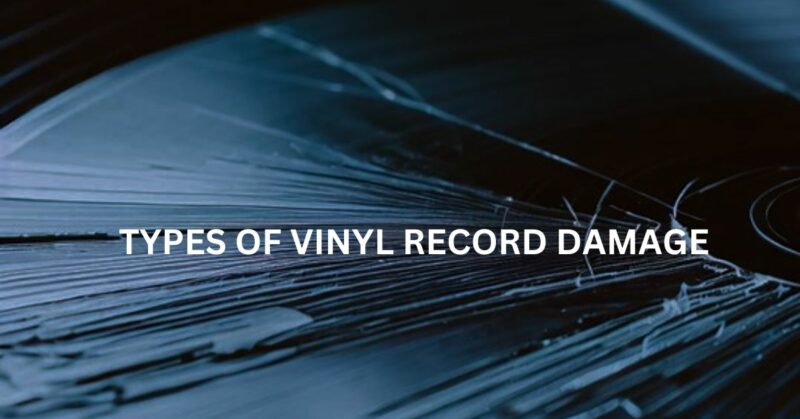Vinyl records have been a beloved format for music enthusiasts for decades. However, despite their durability, vinyl records are not impervious to damage. In this article, we will explore the various types of vinyl record damage that can occur and discuss how they can affect your listening experience. By understanding these issues, you’ll be better equipped to prevent and address damage, ensuring the longevity of your vinyl collection.
Surface Scratches
Surface scratches are among the most common types of vinyl record damage. They occur when the stylus comes into contact with the record’s surface, leaving visible marks. While minor surface scratches may not significantly affect sound quality, deep or numerous scratches can cause distortion and skipping. Proper handling, cleaning, and storage techniques can help minimize the risk of surface scratches.
Warping
Warping refers to the deformation of a vinyl record’s shape, causing it to become uneven or bowed. Exposure to heat, sunlight, or improper storage can lead to warping. This damage can result in tracking issues, causing the needle to skip or jump. It’s crucial to store records vertically in a cool, dry environment to prevent warping.
Groove Wear
Groove wear occurs over time as the stylus travels through the record’s grooves. Continuous playback or using a worn-out or misaligned stylus can accelerate this damage. Groove wear diminishes sound quality, leading to a loss of fidelity and increased surface noise. Regularly cleaning and replacing your stylus can help minimize groove wear.
Ring Wear
Ring wear appears as a series of concentric circles near the center of a record’s label. It is caused by the friction between the record and the turntable platter during playback. Over time, this wear can reduce the clarity of the audio in the affected area. Using a high-quality turntable mat and keeping the turntable clean can help prevent ring wear.
Inner Sleeve Damage
Inner sleeve damage primarily occurs during improper handling or when using low-quality or paper-based inner sleeves. Scratches, tears, or even chemical reactions from low-quality materials can transfer to the vinyl’s surface, leading to permanent damage. It is recommended to use anti-static, polyethylene or polypropylene inner sleeves to protect records from such harm.
Mould and Mildew
Exposure to high humidity or improper storage conditions can result in the growth of mould or mildew on vinyl records. These contaminants can cause visible discoloration, odors, and in severe cases, irreparable damage to the vinyl’s surface. Maintaining an environment with controlled temperature and humidity levels is crucial in preventing mould and mildew.
Groove Deformation
Groove deformation occurs when excessive force is applied to the stylus or due to manufacturing defects. This damage alters the shape of the grooves, leading to mistracking, distortion, or loss of audio information. Careful handling and using a high-quality turntable setup are essential to avoid groove deformation.
Preserving the quality of your vinyl records requires understanding the various types of damage that can occur. By adopting proper handling techniques, storing records correctly, and using high-quality equipment and accessories, you can protect your collection from scratches, warping, groove wear, ring wear, inner sleeve damage, mould, mildew, and groove deformation. Remember, a well-maintained vinyl collection will provide you with years of listening pleasure.

